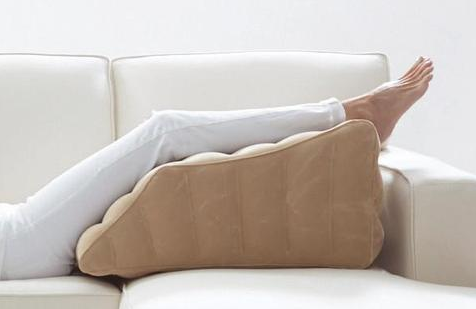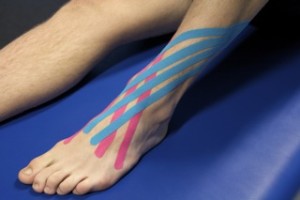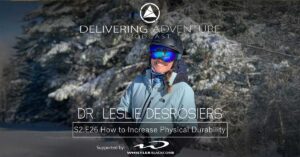Injury management has evolved over the years, and the once highly recognized R.I.C.E. method may not be the only, or best, way to handle acute injuries. A more active recovery strategy is stepping front and center.
R.I.C.E. is an acronym for Rest, Ice, Compress, and Elevate, which was the standard approach to healing in the presence of an acute injury. The acronym has existed for decades, but as we learn more about the human body’s physiology, we continue to evolve as healthcare providers.
The most recent acronym for managing soft tissue injuries and promoting optimal healing is PEACE & LOVE, published in 2019 by Dubois and Esculier. PEACE is a guide for the immediate few days after an injury; while LOVE is a guide for the subsequent phase of recovery, making this a more comprehensive approach that takes long-term outcome into consideration.
Common soft tissue injuries in which this approach might be most applicable include sprains and strains, such as ankle sprains, hamstring strains, quadriceps strains, MCL sprains in the knee, and even calf tears in the lower leg. These are only some examples, as soft tissue injuries can occur throughout the body and during any type of activity.


The biggest takeaway is regarding “rest” as we now understand the importance of early movement to contract muscles, promote lymphatic drainage, reduce fluid congestion, and restore range of motion as tolerated. Rest is a relative term, such as resting from painful movement and activities…or rest for the first few days, then slowly introduce gentle movement.
Another update is regarding “ice.” While we previously packed ice on all injuries as quickly as possible, we now stop to consider whether or not ice is the best remedy for that situation, at that phase in the recovery. Initially, it was thought that applying ice could stop inflammation. We now know that cryotherapy, or applying an ice pack to an injured body part, does not “stop” the inflammatory process, nor does the cold penetrate deep enough to reduce tissue temperature of deeper tissues significantly. This is actually good news because inflammation is necessary to trigger the healing cascade. Inflammation is the first phase of healing, and an essential step in the process, so we do not want to prevent it completely; however, nor do we not want it to persist excessively and inhibit the rest of the healing process. This is where a medical professional makes an educated decision and may or may not recommend cold therapy.
Some people go to the extreme to say that applying ice to an acute injury will cause harm. Others say to apply ice because it might help and won’t hurt. The debate continues, and research remains inconclusive. Ice can help with pain management; and it can be used to manage swelling and the secondary effects that swelling has on surrounding tissues. These are valuable benefits to consider. With so many variables at play, it is impossible to conclude that you should “never” or “always” ice. Cryotherapy has a solid space in the realm of rehabilitation, even if it no longer holds the top rank as the gold standard for acute soft tissue management.
The human body has an incredible ability to heal. We simply need to create an environment to allow the body to do what it needs (and knows how) to do. We need to respect the healing process and not get in the way.
PEACE & LOVE is the newest recommendation for managing soft tissue injuries in the immediate and subsequent stages of healing. The acronym is more comprehensive than previous recommendations as it sheds light on the importance of education as well as active recovery and psychosocial factors.
PEACE
“Immediately after a soft tissue injury, do no harm and let PEACE guide your approach”
P- Protection
Protecting the injured tissue is a more sophisticated approach than the previous term “rest”. Movement is important to promote healing, but you do not want to put the tissue into ranges that will cause more damage; therefore we protect the joint by avoiding activities and movements that increase pain. In the first few days after an injury, pain can be a good guide to know your limits. Protect the injured area.
E – Elevation
Excessive swelling and congestion in the area of injury can have negative effects, so good old elevation may help to promote lymphatic drainage and reduce fluid from settling into the area and not moving out. The key is to elevate the injured limb higher than the heart so gravity can work to your advantage.

A – Avoid Anti-Inflammatories
As mentioned earlier, inflammation is an essential component of the healing process. Taking unnecessary anti-inflammatories as a standard immediate response to injury could negatively influence the healing process by halting that initial phase. The human body has an innate ability to activate the inflammatory response, which then triggers a cascade of healing events, and eventually leads to the next phase of healing and regenerating new tissue. When this system works as it is designed to do, it is a wonderful thing. Keep in mind that this guide is for “standard” care after a soft tissue injury and does not apply to all cases. If inflammation does not subside for some reason and an undesired pain-inflammation cycle is triggered, then adaptations to the approach may be made. Always follow the recommendations of your own medical provider.
C – Compression
External compression over the injured area can help reduce swelling and edema. Persistent or excessive swelling and edema may contribute to congestion in the area and can slow the healing process, or may contribute to secondary tissue damage of surrounding tissues. An elastic bandage or specialized taping can be effective.

E – Education
Understanding the condition and the healing process will help you to make better decisions during your immediate and long-term recovery. Listen to your body and allow your body to do what it knows how to do. Remember that “active” recovery is preferred over “passive” recovery, so choose treatments that emphasize movement and muscle contraction over passive modalities and total rest. As physical therapists, we emphasize patient education to facilitate your success in managing the injury now and in the future.
LOVE
“After the first days have passed, soft tissues need LOVE”
L – Load
Tissues need load in order to heal properly. Tissue regeneration and remodeling rely upon the forces and load applied. Gradually apply appropriate loads as soon as possible. As tolerance increases, load should increase, and capacity will increase. Listen to your body and let pain guide you as you begin to move, apply load or weight, and strengthen the limb. A physical therapist is extremely valuable to help determine what the appropriate and optimal loading is so that steady healing takes place without further tissue damage. The point is that active movement and loading is important early on, rather than old-fashioned “rest”.
O – Optimism
Psyochosocial barriers and negativity can impede healing and lead to a much longer recovery than physiologically necessary. Managing your mental state can be challenging, but is essential to a successful outcome.
V – Vascularization
Cardiovascular exercise increases bloodflow to injured tissues and will contribute to a more opticamal healing environment. Aerobic exercise can also reduce the need for pain medication and can improve function.

E – Exercise
Exercise is an essential component to restoring mobility, strength, and proprioception for returning to activity and preventing future injuries. Choose exercises carefully to not disrupt healing or cause further tissue damage. Do not push into pain. Gradually increase intensity, load, or difficulty to promote greater capacity to handle force and reduce the risk of re-injury.
There you have the breakdown and justification of the most current recommendation for soft tissue injuries, PEACE & LOVE. The updates highlight the opportunity to make decisions for long-term outcomes rather than only focusing on the immediate effects in the first moment of injury. Remember that this is a guide for standard care and may help facilitate quicker recovery after ankle sprains and hamstring strains so you can get back to doing what you love.

References
Dubois B, Esculier J. Soft-tissue injuries simply need PEACE and LOVE. British Journal of Sports Medicine 2020;54:72-73.
Peace and Love Principle. (2020, August 5). Physiopedia, . Retrieved 20:18, April 20, 2021 from https://www.physio-pedia.com/index.php?title=Peace_and_Love_Principle&oldid=245428.



